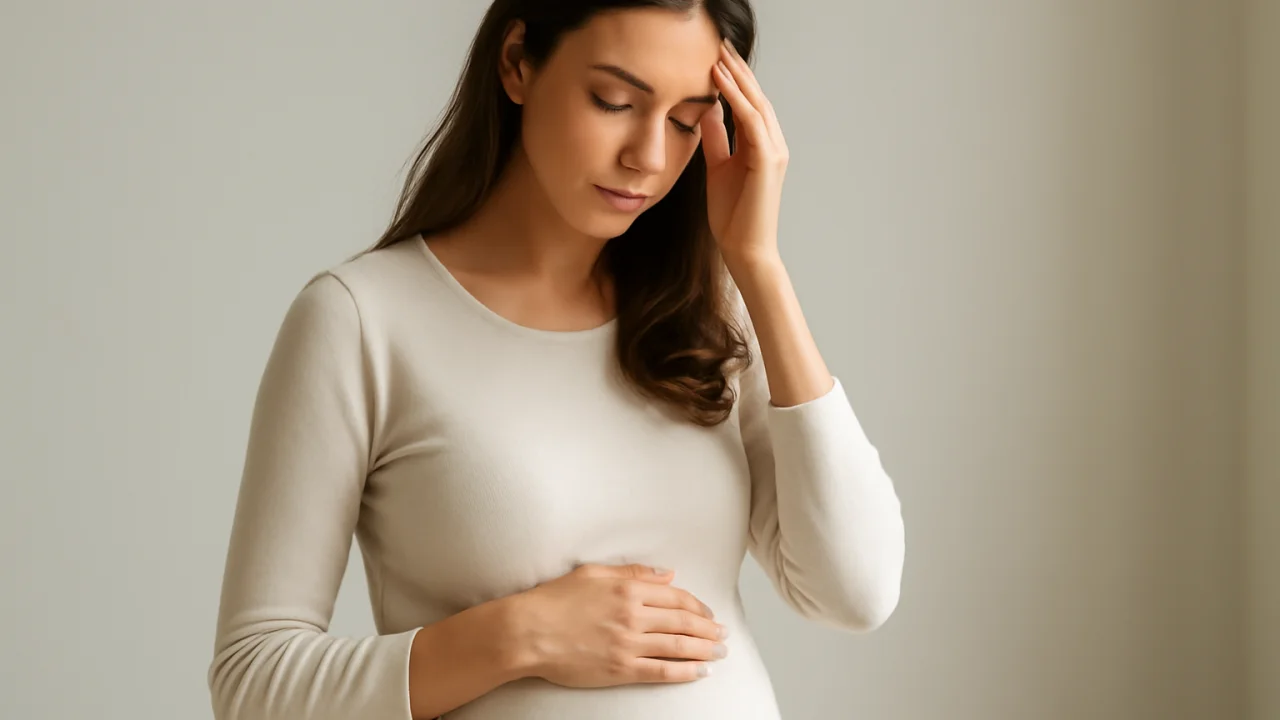
Understanding Common Women's Health Conditions: Symptoms, Diagnosis, and Management
📑 Contents
Understanding Common Women's Health Conditions: Symptoms, Diagnosis, and Management
Women's health covers a broad range of conditions that can affect physical and emotional well-being at different life stages. From menstrual disorders to reproductive health, menopause, and chronic diseases, understanding these conditions is essential for early detection and effective management. This article explores some of the most common women’s health conditions, their symptoms, causes, diagnosis, and treatment options, providing practical advice for women of all ages.
1. Menstrual Disorders

Menstrual disorders are among the most common health concerns for women of reproductive age. They can significantly impact daily life and sometimes indicate underlying health issues.
Common Menstrual Disorders
- Dysmenorrhea: Painful periods with cramps, often starting just before or during menstruation.
- Menorrhagia: Heavy or prolonged menstrual bleeding.
- Oligomenorrhea: Infrequent periods, usually more than 35 days apart.
- Amenorrhea: Absence of menstruation for three or more cycles.
- Premenstrual Syndrome (PMS): Emotional and physical symptoms before menstruation, such as mood swings, bloating, and headaches.
Causes and Risk Factors
Menstrual disorders can be caused by hormonal imbalances, stress, significant weight changes, polycystic ovary syndrome (PCOS), thyroid disorders, or uterine conditions like fibroids and endometriosis.
Diagnosis and Treatment
Diagnosis typically involves a medical history review, physical examination, and sometimes blood tests, ultrasounds, or hormone level assessments. Treatment depends on the cause and may include hormonal therapies, lifestyle changes, pain relief medications, or surgical interventions for severe cases.
2. Polycystic Ovary Syndrome (PCOS)

PCOS is a common endocrine disorder affecting up to 10% of women of reproductive age. It is characterized by hormonal imbalances that can impact menstruation, fertility, and overall health.
Symptoms of PCOS
- Irregular or absent periods
- Excess facial or body hair (hirsutism)
- Acne and oily skin
- Weight gain or difficulty losing weight
- Thinning hair on the scalp
- Difficulty getting pregnant
Causes and Risk Factors
The exact cause of PCOS is unknown, but genetics, insulin resistance, and low-grade inflammation are thought to play roles. Women with a family history of PCOS or type 2 diabetes are at higher risk.
Diagnosis and Management
PCOS is diagnosed based on symptoms, hormone level tests, and ovarian imaging. Management focuses on symptom relief and may include weight management, hormonal birth control, medications like metformin, and fertility treatments if needed.
3. Endometriosis
Endometriosis occurs when tissue similar to the lining of the uterus grows outside of it, causing pain and potentially affecting fertility. It affects about 1 in 10 women during their reproductive years.
Symptoms of Endometriosis
- Pelvic pain, especially during periods
- Pain during intercourse
- Pain with bowel movements or urination
- Heavy periods or bleeding between periods
- Infertility
- Fatigue, diarrhea, constipation, or nausea
Causes and Risk Factors
The exact cause is unknown, but possible factors include retrograde menstruation, immune system disorders, genetics, and hormonal imbalances. Risk is higher in women who have never given birth, started periods at an early age, or have a family history of endometriosis.
Diagnosis and Treatment
Diagnosis may involve pelvic exams, ultrasounds, MRI, or laparoscopy. Treatment can include pain relief, hormonal therapies, and surgery to remove endometrial tissue. Early diagnosis and management are crucial to prevent complications.
4. Reproductive Cancers

Several cancers specifically affect women’s reproductive organs, including cervical, ovarian, uterine (endometrial), and vulvar cancer. Early detection dramatically improves outcomes.
| Cancer Type | Key Symptoms | Screening/Diagnosis | Prevention |
|---|---|---|---|
| Cervical Cancer | Abnormal vaginal bleeding, pelvic pain, pain during intercourse | Pap smear, HPV test, biopsy | HPV vaccination, routine screening |
| Ovarian Cancer | Bloating, pelvic pain, frequent urination, feeling full quickly | Pelvic exam, ultrasound, CA-125 blood test | No definitive prevention; risk reduction with oral contraceptives, healthy lifestyle |
| Uterine (Endometrial) Cancer | Abnormal uterine bleeding, pelvic pain | Endometrial biopsy, ultrasound | Maintaining healthy weight, managing hormone therapy |
| Vulvar Cancer | Itching, pain, lumps or sores on the vulva | Physical exam, biopsy | HPV vaccination, regular exams |
When to Seek Help
Any unusual symptoms—such as persistent pelvic pain, abnormal bleeding, or unexplained lumps—should prompt a visit to your healthcare provider. Regular screenings and HPV vaccination are key preventive measures.
5. Menopause and Perimenopause
Menopause marks the end of a woman’s reproductive years, typically occurring between ages 45 and 55. Perimenopause is the transitional period leading up to menopause, often accompanied by significant hormonal changes.
Common Symptoms
- Irregular periods
- Hot flashes and night sweats
- Vaginal dryness
- Mood swings, anxiety, depression
- Sleep disturbances
- Decreased libido
Managing Menopause
Lifestyle modifications, hormone replacement therapy (HRT), non-hormonal medications, and alternative therapies can help manage symptoms. It's important to discuss the risks and benefits of HRT with your doctor.
6. Osteoporosis
Women are at higher risk for osteoporosis, especially after menopause due to decreased estrogen levels. This condition weakens bones, increasing the risk of fractures.
Risk Factors
- Postmenopausal status
- Family history of osteoporosis
- Low calcium and vitamin D intake
- Inactive lifestyle
- Smoking and excessive alcohol use
Prevention and Treatment
Prevention includes adequate calcium and vitamin D intake, regular weight-bearing exercise, and avoiding smoking and excessive alcohol. Medications may be prescribed for those at high risk or with diagnosed osteoporosis.
7. Mental Health and Emotional Well-being
Women are more likely than men to experience certain mental health conditions, including depression and anxiety, often linked to hormonal changes, life events, and social pressures.
Key Considerations
- Hormonal fluctuations (menstruation, pregnancy, menopause) can affect mood.
- Postpartum depression is a serious condition that requires medical attention.
- Chronic health conditions and caregiving responsibilities can increase stress and risk of anxiety or depression.
Support and Resources
Seeking support from mental health professionals, joining support groups, and practicing self-care are vital. Early intervention can prevent complications and improve quality of life.
FAQs about Women’s Health Conditions
1. When should I see a doctor about menstrual irregularities?
If you experience very heavy bleeding, periods that last longer than seven days, extremely painful periods, or missed periods for more than three cycles, consult your healthcare provider.
2. How can I reduce my risk of reproductive cancers?
Regular screenings (such as Pap smears and pelvic exams), HPV vaccination, avoiding smoking, maintaining a healthy weight, and practicing safe sex can reduce risk.
3. What lifestyle changes help manage PCOS?
Healthy eating, regular physical activity, weight management, stress reduction, and limiting processed foods can help manage PCOS symptoms.











